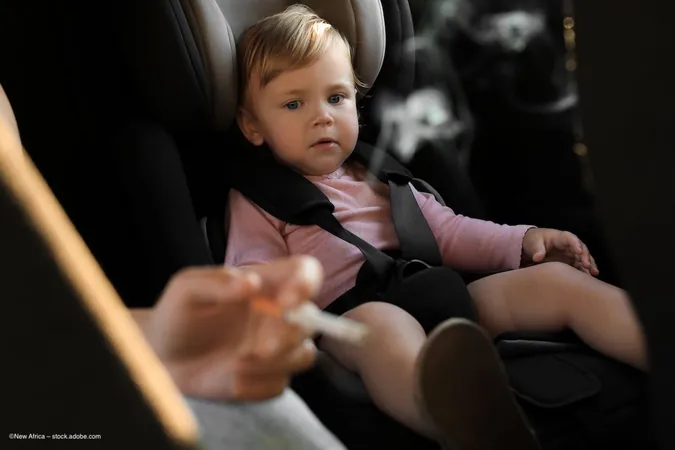
Stop the Smoke: Secondhand Smoke Linked to Myopia in Kids!
2025-07-16
Author: John Tan
Raising Eyebrows: Study Reveals Shocking Link Between Secondhand Smoke and Myopia
A groundbreaking study from China has ignited concern over secondhand smoke as a major threat to children's eye health. Spearheaded by Dr. Yuchang Lu from Peking University, this investigation highlights an urgent need to eliminate secondhand smoke to combat the rising epidemic of myopia, or nearsightedness, in young children.
Though the exact causes of myopia remain elusive, researchers believe both genetics and environmental influences play critical roles. In their compelling report published in BMC Ophthalmology, Dr. Lu and his team emphasized, "Identifying risk factors for myopia and enhancing modifiable environmental predictors are essential in addressing this growing public health crisis."
A Unique Study with Eye-Opening Findings
This innovative study is pioneering in its approach as the first cohort study in China to investigate the specific relationship between secondhand smoke exposure and myopia development. While previous research hinted at the dangers of secondhand smoke, clear conclusions were lacking. According to the researchers, this investigation adds invaluable insights into the existing knowledge surrounding eye health.
Study Breakdown: Methods and Results
The study involved 232 children aged 5 to 10 years, with 128 exposed to secondhand smoke and 104 not exposed. They were monitored over a 12-month period through evaluations at three, six, nine, and twelve months. The researchers carefully measured changes in lens curvature and axial length, while also gathering detailed behavioral and parental data through questionnaires.
The findings were striking: children exposed to secondhand smoke demonstrated a mean shift of -0.64 diopters per year in their myopia, compared to -0.47 diopters for their smoke-free peers. This difference was statistically significant (P = .004). Moreover, the exposed group experienced a more pronounced increase in axial length (0.26 mm vs. 0.20 mm), further underscoring the harmful impact of secondhand smoke (P = .002).
A Call to Action for Parents!
Multivariate analysis identified significant predictors of axial elongation, including exposure to secondhand smoke, baseline myopia, and parental myopia. Dr. Lu's team concluded, "These results underline the urgent need for heightened awareness and action against secondhand smoke exposure, particularly for parents. Quitting smoking is not only a personal health choice—it's vital for the health and development of your children. Let’s work together to create a safer, smoke-free environment for our little ones!"


 Brasil (PT)
Brasil (PT)
 Canada (EN)
Canada (EN)
 Chile (ES)
Chile (ES)
 Česko (CS)
Česko (CS)
 대한민국 (KO)
대한민국 (KO)
 España (ES)
España (ES)
 France (FR)
France (FR)
 Hong Kong (EN)
Hong Kong (EN)
 Italia (IT)
Italia (IT)
 日本 (JA)
日本 (JA)
 Magyarország (HU)
Magyarország (HU)
 Norge (NO)
Norge (NO)
 Polska (PL)
Polska (PL)
 Schweiz (DE)
Schweiz (DE)
 Singapore (EN)
Singapore (EN)
 Sverige (SV)
Sverige (SV)
 Suomi (FI)
Suomi (FI)
 Türkiye (TR)
Türkiye (TR)
 الإمارات العربية المتحدة (AR)
الإمارات العربية المتحدة (AR)